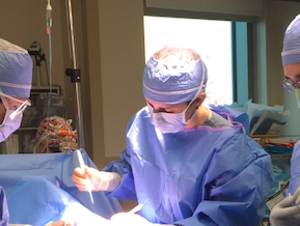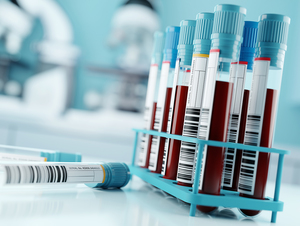Regarding surgery, many swear by intraoperative PTH while others say no. As a patient it would seem that having a confirmed appropriately lowered PTH while the patient is still in the OR would make more sense than waiting until they are in the recovery room. Can a surgeon really just look at a parathyroid gland and tell it’s abnormal even when it’s just at the beginning stages?


Looking at the parathyroids is currently the best way to evaluate the parathyroids - if you have enough experience with it. Intraoperative PTH does seem logical, but in practice does not work as well as expected. In my experience, viewing all four parathyroid glands is a more accurate and faster way to evaluate the parathyroid glands and ensure a cure. In my residency and endocrine surgery fellowship, I was trained to use intraoperative PTH - but I do not use it now, for reasons I’ll discuss below. I believe that experience makes a large difference here. Once you have a lot of experience looking at parathyroid glands (by my estimate, I’ve seen over 12,000 parathyroids), you get pretty good at telling which of them are abnormal. This is not always true, and you can look at a parathyroid and not see the tumor, but as you get more experienced, this becomes less and less likely to happen.
What about “early stage” tumors? Well, if the tumor is large enough to be causing a problem - like causing a high calcium or PTH level - then it is almost certainly large enough to be seen when you are looking at the gland. Since you will only get parathyroid surgery if there is some indication that you have parathyroid disease, the tumor should be large enough to be visible. Sometimes, this is subtle, and experience here makes a very large difference. If your labs are borderline, it is extremely important that you have an experienced surgeon.
Here is the thinking behind ioPTH: a surgeon can remove one parathyroid, often one seen on preoperative imaging, test the PTH level in the blood, then wait 5 to 10 minutes and test again, then wait 5 or 10 more minutes and test again. If the PTH drops to normal range, and/or by 50%, the surgeon can stop the operation without looking at the other parathyroids. The assumption is that if the PTH drops a lot, then you found the one tumor and other glands are normal. This is not a great assumption. If you remove a large parathyroid tumor, it is very likely that the PTH will drop by 50%, and into normal range, even if there is another parathyroid tumor present. The drop indicates that you removed a parathyroid tumor, but in many cases does not tell you anything about the remaining glands. And really, you should know that you removed a tumor because you should know what parathyroid tumors look like. I know this from experience - this was how I was trained to do the operation in fellowship. It seemed unreliable at the time, but it was the best thing we had. Once I was experienced enough to reliably find all four parathyroid glands, I realized this was a much better method. I have performed many reoperations (patients who were not cured the first time and need a second operation) on patients who had had a one-gland operation somewhere else, and had a PTH drop of 50%, into normal range - and still had the disease.
Another problem with intraoperative PTH, which is perhaps worse, is that sometimes people take a little longer to have a PTH drop, even if they are actually cured. If the PTH doesn’t drop, the surgeon then starts digging around for the other parathyroids. Unfortunately, since the surgeon does not routinely look for all four glands, there is a pretty good chance that he will inadvertently injure the glands, and a very good chance that he won’t find them all. He may also then injure surrounding structures like the nerve that controls the voice. For these reasons, I would discourage any surgeon who does not routinely look at all four parathyroid glands from doing so based on a PTH level.
I would actually prefer that surgeons not check PTH in the OR at all. If it drops, you can’t guarantee that the person is cured. If it doesn’t drop, you can’t guarantee that there is another tumor, and you may do more harm than good by digging around randomly.
Although I don’t check intraoperative PTH, I do check PTH about an hour after the person gets to the recovery room (after looking or trying to look at all four parathyroid glands). At this point, the PTH is a lot more accurate. But I don’t want to see a 50% drop, or a PTH in the normal range. I want to see a suppressed PTH - that is, a PTH below normal range. After an hour, most people will have had enough time for the PTH to drop. And it should not drop to normal range if you have a high calcium level. Remember that high calcium levels will suppress normal parathyroid glands, so the normal glands should not be making much PTH. The PTH should thus be in the low range, not normal range.
